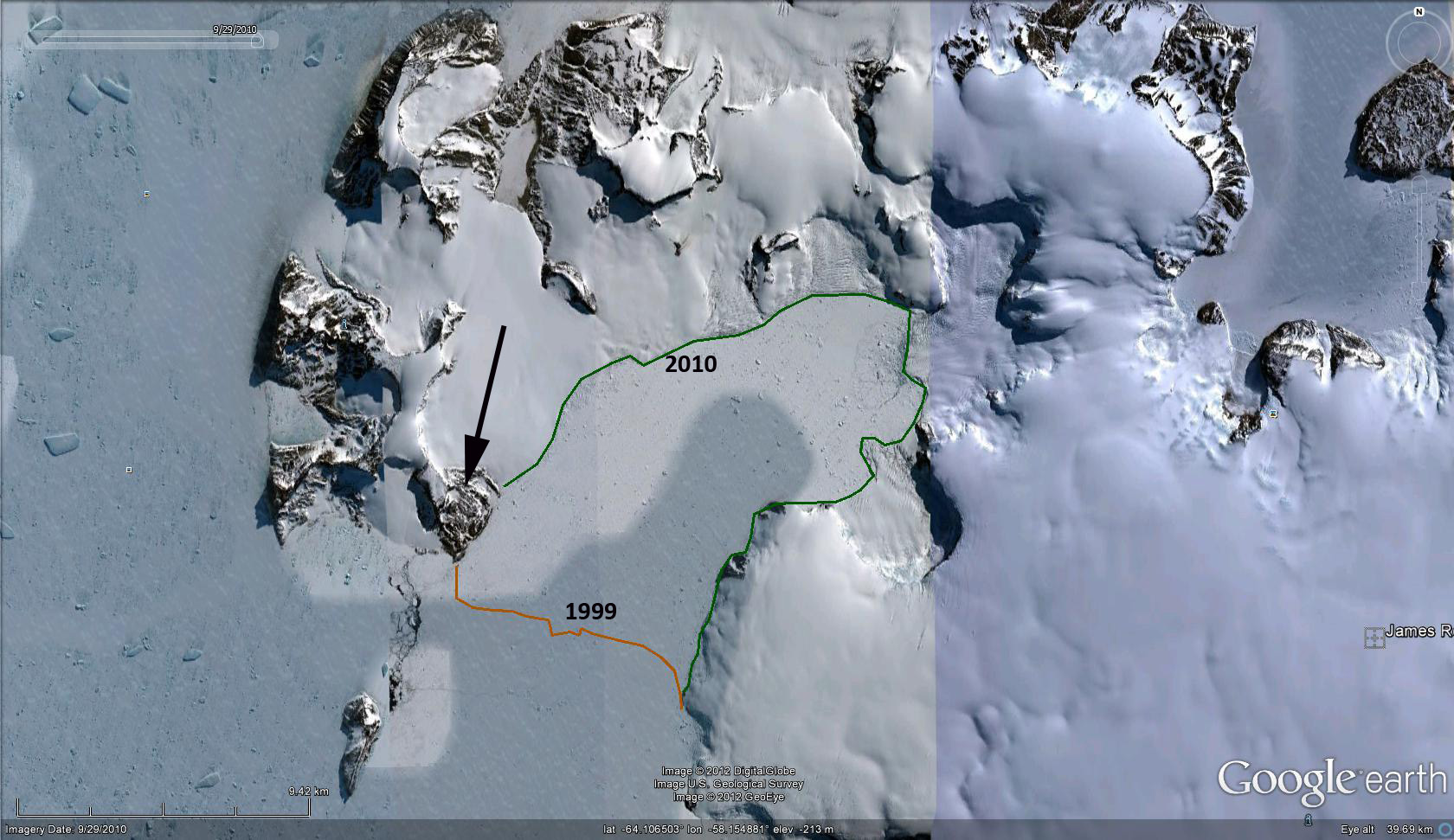March 4, 2012
Rohss Bay Glacier Retreat, James Ross Island, Antarctica
Posted by Mauri Pelto
In January 1995 the Prince Gustav Ice Shelf connecting James Ross Island to the Antarctic Peninsula collapsed (Glasser et al 2011). One of the principal glaciers feeding the iceshelf was the outlet glacier from Rohss Bay on James Ross Island. By 1999 this outlet glacier terminus was at the outlet of Rohss Bay. From 1999 to 2009 Rohss Bay opened up as the Rohss Bay glacier retreated 15 km. This retreat represents part of the extensive ice loss, 490 square kilometers for the island from 1988-2009 Davies et al (2012). From 1988-2001, 91 of 100 glaciers on the island examined by Davies et al (2012) retreated. Imagery from the field work by the LARISSA project in the region provides excellent context for the region. A combination of Landsat and Google Earth Imagery from 1999, 2000, 2008 and 2010 illustrates this change in a sequence below. The margin is indicated in each case as is an unnamed island by an arrow at the southwest end of Rohss Bay. Most of the ice loss was the breakup of a floating ice shelf in the bay. 


 Glasser et al (2011) provide a sequence from 2002-2006 that illustrates most of the retreat occurring in this five year period. Currently most of the floating ice of the bay has been lost and retreat should slow down considerably. The ice was lost not through surface melting, but via calving. The typical sequence for ice shelf collapse is thinning from basal and surface melt increases, that leads to weakening and destabilization of the iceshelf, expansion of rifting and then breakup. The retreat on James Ross Island is also observed on the island to the north Vega Island.
Glasser et al (2011) provide a sequence from 2002-2006 that illustrates most of the retreat occurring in this five year period. Currently most of the floating ice of the bay has been lost and retreat should slow down considerably. The ice was lost not through surface melting, but via calving. The typical sequence for ice shelf collapse is thinning from basal and surface melt increases, that leads to weakening and destabilization of the iceshelf, expansion of rifting and then breakup. The retreat on James Ross Island is also observed on the island to the north Vega Island. 


 Dean of Academic Affairs at Nichols College and Professor of Environmental Science at Nichols College in Massachusetts since 1989. Glaciologist directing the North Cascade Glacier Climate Project since 1984. This project monitors the mass balance and behavior of more glaciers than any other in North America.
Dean of Academic Affairs at Nichols College and Professor of Environmental Science at Nichols College in Massachusetts since 1989. Glaciologist directing the North Cascade Glacier Climate Project since 1984. This project monitors the mass balance and behavior of more glaciers than any other in North America.